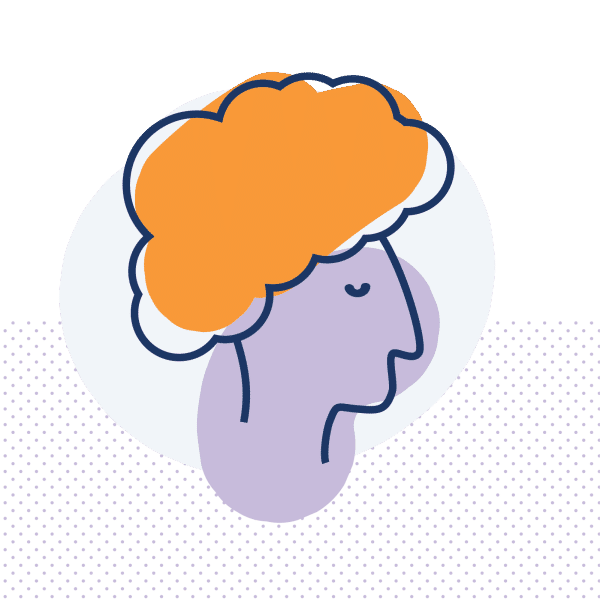Introduction
Herivelto "Del" Silva Teixeira is working to prevent crime and violence among youth through a set of actions designed to teach young people on the street and in poor communities their rights in addition to their responsibilities.
The New Idea
Del is showing Brazil's poorest children that there are alternatives to a life of crime. During his 10 years as a street educator and member of the poor community Fortaleza, Del realized that criminals in poor communities were younger and younger. By providing alternatives and teaching children about the ramifications of their actions, he is seeking to break the rising trend of young criminal offenders. His program builds a base of community support, involving schools, mentors, church groups, social workers, young offenders, and their families. The individualized network of support is designed both to keep adolescents from committing crimes and to make sure that those who have know why and how they can stop. Del also leads a series of cultural and leisure activities, school talks, professional training, and peer-mentoring programs both for youth on probation and for their communities. By training peer mentors and educators, Del is addressing the entire system that now deals with youth offenders in an impersonal and ineffective way.
The Problem
Young people growing up in poor communities and shantytowns on the fringes of large cities in Brazil are surrounded by violence, economic pressures, social exclusion, and lack of opportunities. Alternatives for education, employment, cultural activities, and leisure are practically nonexistent. With government services and social assistance programs scarce in these neighborhoods, the most convincing "opportunity" to survive and get ahead becomes involvement with powerful bands of organized crime and drug dealing. Knowing that young people under the age of 18 cannot legally be imprisoned, drug lords hire them as delivery boys, spies, decoys, and even assassins, offering them much more in terms of status and money than their schools and families can. Beginning with petty crimes and misdemeanors, these youths soon spiral into crime and violence that too often escalates until they "graduate" to adulthood by entering prison. Rates of recidivism for young people vary among counties, but reach 80 and 90 percent in some urban centers.
Though they cannot be imprisoned, young people 12 to 18 who break the law are still accountable for their actions. The Statute on Children and Adolescents, the principal legislation in Brazil guaranteeing the rights of children, provides six possible socioeducational measures to deal with young people who commit crimes. These measures, ranging from reparation to confined detention, are stipulated to promote the rehabilitation of the youth and to prevent criminal recurrence. However, most young people do not know their statutory rights or responsibilities.
Poor youth in peripheral communities, in particular, feel immune to punishments or simply take the risk since no other opportunities exist. Government services intended to prevent and stop repeat offenses among youth are inadequate and not uniform, having been relegated to bureaucratic and underfunded county governments. For example, youth 12 to 18 who have committed first or small offenses are typically put on probation through a measure called "assisted freedom." A judge-appointed social worker and mentor is supposed to support each youth through six months of probation and help them to use educational and professional opportunities. However, in reality, the young are "sentenced" the return to all the pressures that led them to crime in the first place. Instead of individualized, frequent attention, the underresourced government agents typically hold a brief meeting with the young person, ask a list of standard questions about school attendance, and complying with community service obligations, provide a stamp of approval.
Throughout Brazil, the scenario is similar to the situation in Fortaleza, where the number of youth in conflict with the law outnumbers the social workers and public authorities to accompany them. The Lagamar district in the outskirts of Fortaleza is notorious for being one of the most violent areas in the city. Here, young people are easily involved in crime and drug dealing because of the lack of educational, income, and cultural opportunities. At the end of 2002, there were about 40 apprehended youth serving "sentences" involving socioeducational measures. This number increased from five adolescents only two years previously. However, there are many more youth that have not been "caught" and remain involved in crime and acts of violence. More than 100 young people are repeatedly involved in robberies, assaults, and drug trafficking, in addition to 20 adolescent girls involved with prostitution rings. The rate of young people involved in crime has a tendency to increase considering the multiplying effect they have on their peers. This is particularly true for those who are first offenders and will return to the same criminal activities without effective intervention.
The Strategy
In 2000 Del began to shift his work as a social educator and community leader in the outskirts of Fortaleza to focus on preventing violence among kids on the street and poor youth in conflict with the law. His idea was to create a positive reference in the community to keep them from entering or returning to crime and drugs. Del also wanted to ensure that at-risk youth have someone on their side to help reinforce and reconstruct family relationships and improve their acceptance in the community. His program–"My Life, My History"–trains educators from the community to provide individualized and daily attention to the young people on probation. The program promotes a series of workshops and activities for at-risk youth to teach them their rights and responsibilities. With this team of young educators, Del is mobilizing young people to create new opportunities for themselves and their peers within the community.
Del began by mapping out the problems in the Lagamar community and identified youth carrying out their sentences, specifically those on "assisted freedom" probation. Del then held a training workshop for 90 members of the community to increase leadership abilities and involvement in community activities. From these, he invited five to participate in a new initiative to serve as counselors–a type of "guardian angel"–for the five young people in "assisted freedom" and provided orientation and guidance for 25 other young people in conflict with the law.
Each educator works with five youth, carrying out daily visits with the young person and the family to provide monitoring and support. The educator is trained to be someone "on their side"–to help them deal with conflicts with their families, the police, the school, and community. At the same time, the educator works with the young person's entire community–from the 2 to 25 family members, the school teachers and administrators, other students, the local church, and other community organizations. In this way, not only the youth offender is engaged and educated, but also the whole community, including sisters, brothers, cousins, classmates, and others, can learn about alternatives to crime. The educator also provides an orientation to help youth fulfill their community service, stay in school and embark on future professional opportunities. Young people from 12 to 14 are involved in courses to help prepare them for succeeding in working environments, and those 16 years old and above are referred to professional training courses through a partnership with the Marcos Bruin Foundation. Families are engaged in group meetings, encouraging everyone to share their frustrations and successes. Through this process, Del aims to increase the success rate of young people fulfilling their community service obligation and helping them internalize their rights and responsibilities as citizens, thereby reducing the rate of recidivism. He works to rechannel their energy in a positive direction.
In addition to the individualized attention centered on specific youth, Del carries out activities in the community and schools to mobilize youth to understand and exercise their rights and avoid the world of crime that surrounds them. Through the National Street Kids Movement-Periphery Commission and in partnership with CEDECA, Del contributed to the elaboration of teaching materials about the rights and responsibilities of youth based on the Statute on Children and Adolescents. Del uses these materials in talks in schools and plans to work more closely with teachers to ensure they understand the problems facing poor youth in the community, particularly those in conflict with the law who are behind in their studies and require special support and attention.
Del plans first to replicate his program in the five surrounding neighborhoods. He will also work with the Ministry of Justice in order to influence public policies on the issue. He plans to demonstrate the effectiveness of the work he is carrying out in order to increase partnerships and implementation of the project throughout the city. To support the spread of his idea, Del is working to raise awareness in society about the increasing instance of youth involved with crime and create pressure on improving policies and government practices with regard to this population. He has gained media attention and carried out campaigns to increase social services, educational, and professional opportunities and cultural activities for young people involved with crime and violence. His plans are to systematize the program and its spread throughout poor neighborhoods in Fortaleza and, with the support of the National Movement of Street Kids, use this to spread to other urban centers throughout Brazil.
The Person
Del grew up in the outskirts of Fortaleza where he says one lived by, or was consumed by, crime. His family was poor and by the age of eight, Del had ventured out to the streets to gather cans and sell knickknacks at stoplights to earn a bit of money.
He always enjoyed talking and interacting with others and stood out as a leader among his peers, the graffiti artists, funk dance leaders, and gangs. He talked about inequality, discrimination, and lack of opportunities for young people on the periphery of the city, inspiring others to stand up for their rights. Little by little, he began to realize that his ideas could contribute much more toward helping change to situation facing youth if they were channeled into social justice groups and community organizations. He became involved in the Christian Children's Fund that sponsored poor children in his community and at age 16 became a street educator at the fund-sponsored youth center.
Del's experience at the Christian Children's Fund got him nominated for a city hall scholarship to become a social educator at the project Semear through the Citizens' Family and Child Foundation. The aim of his work was to bring together young people in the world of drugs to create alternative opportunities. He was soon invited to join the street educators' network with the National Street Children's Movement, working as an educator and mobilizer on the streets and in the plazas of the city. Building up the respect and recognition from the community and public authorities, Del decided to run for the elected position in the Counsel for the Rights of Children and Adolescents in Fortaleza, the principal body designated to guarantee young people's rights under the Statute for the Rights of Children and Adolescents. He wanted to gain professional experience and understand the policymaking bodies from the inside, though he knew it would be nearly impossible for someone from his background to gain a position usually reserved for the rich and politically powerful. Though he did not win enough votes to gain a position in the first round, he received enough support to be awarded a substitute position and spent four months as a councilman in 2002, receiving and reviewing up to 50 cases a day of violations of the rights of young people in his city.
In all his experiences, Del remained focused on promoting the rights and responsibilities of youth. Though his family had little money and he lived in a world of drug dealing and crime, Del felt that he had someone on his side. Through his work, he realized that most young people involved with crime lacked family support, guidance, or simply someone to listen to them. He decided to dedicate himself to reducing the number of young people who use crime as a form of expression and outlet for their frustration. Instead, he would show them ways to redirect their strengths and plan for better futures as citizens with rights.




